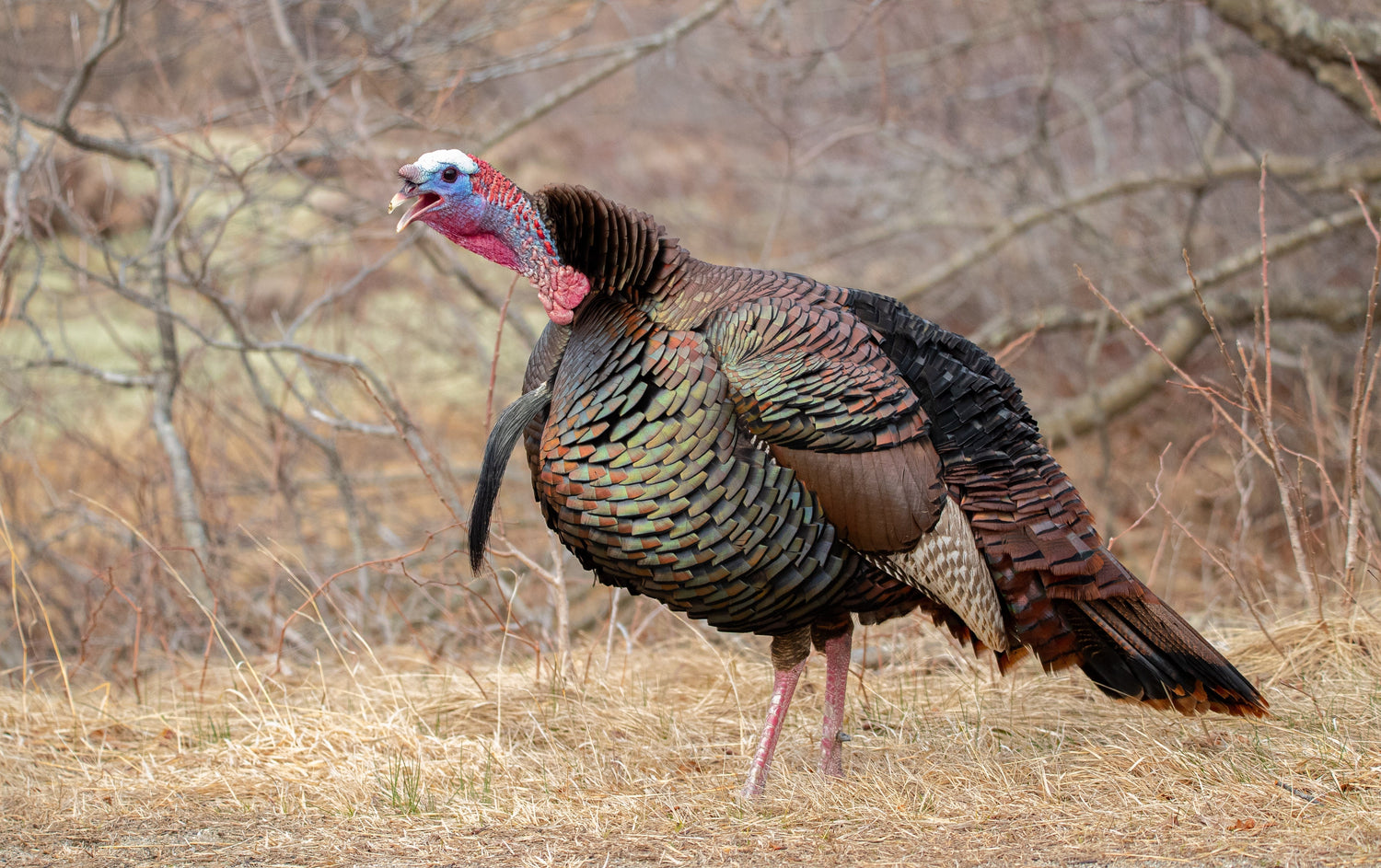Abstract
Wild turkey hunting relies heavily on effective calling techniques, as different subspecies of North American turkeys respond uniquely to various calls. Understanding the biological and behavioral differences among turkey subspecies, as well as the seasonal and daily patterns of their vocalizations, can significantly improve hunting success. This article reviews the most effective turkey calling strategies based on scientific research, field studies, and hunter observations, providing a practical yet research-backed approach for avid outdoorsmen. Additional focus is placed on how environmental factors, turkey behavior, and seasonal changes influence calling techniques, offering a comprehensive guide for hunters aiming to refine their skills.
Introduction
The art of turkey calling isn’t just about making noise—it’s about speaking the language of the wild turkey (Meleagris gallopavo). Successful hunters don’t just rely on luck; they understand the science behind turkey vocalizations and how different subspecies respond based on habitat, breeding cycles, and seasonal factors. North America is home to five primary wild turkey subspecies: Eastern, Osceola, Rio Grande, Merriam’s, and Gould’s. This article breaks down their communication patterns and the most effective calling strategies for each, incorporating seasonal timing, daily activity rhythms, and environmental considerations to help hunters maximize their success.
Turkey Vocalization and Communication
Turkeys aren’t just gobbling for fun; every sound they make serves a purpose. Understanding these vocalizations allows hunters to communicate effectively and bring gobblers into range.
- Yelps: The most common turkey vocalization, used by hens to call in gobblers and maintain contact with other turkeys.
- Clucks: Short, sharp sounds indicating alertness or casual communication.
- Purrs: Soft, rolling sounds signaling contentment or non-aggression, often used by feeding turkeys.
- Cutting: Rapid, excited clucks from hens signaling urgency, often used to trigger a gobbler’s response.
- Gobbling: The signature male turkey sound used to attract hens and establish dominance.
- Kee-Kee Runs: High-pitched whistles often used by young turkeys or as an assembly call in the fall.
Research suggests that turkeys adjust their vocalization frequency and volume based on environmental factors and predation risk (Chamberlain & Miller, 2015). Recognizing these patterns helps hunters adapt their calling techniques for maximum effectiveness.
Calling Strategies by Subspecies, Season, and Time of Day
1. Eastern Wild Turkey (Meleagris gallopavo silvestris)
- Best Calls: Box calls and slate calls for morning yelps; cutting sequences mid-morning to lure in distant gobblers.
- How to Use:
- Tree Yelps: Before sunrise, use a slate call to create soft tree yelps. Mimic a waking hen to let gobblers know where you are.
- Cutting & Excited Yelps: Mid-morning, use a box call to cut aggressively, mimicking a hen seeking attention.
- Clucks & Purrs: Midday, transition to soft clucks and purrs on a pot call to keep gobblers interested without over-calling.
- Seasonal Considerations:
- Spring: Gradually increase intensity throughout the morning. Late spring requires subtle and spaced-out calling due to wary gobblers.
- Fall: Kee-kee runs with a diaphragm call mimic lost poults, which can help reassemble flocks.
- Time of Day: Pre-dawn and early morning are optimal for loud calling; midday requires softer purrs and clucks. Late afternoon can be productive near roosting areas.
2. Osceola Wild Turkey (Meleagris gallopavo osceola)
- Best Calls: Mouth diaphragm calls for sharp, high-pitched yelps.
- How to Use:
- High-Pitched Yelps: Use a diaphragm call to produce crisp yelps that mimic Osceola hens.
- Soft Clucks & Purrs: Work well in thick cover where turkeys are cautious.
- Seasonal Considerations:
- Spring: Osceolas are less vocal; intermittent yelps and purrs work best.
- Fall: Minimal calling; soft kee-kee runs or light purrs can locate birds.
- Time of Day: Most responsive at dawn; midday calling should be sparse.
3. Rio Grande Wild Turkey (Meleagris gallopavo intermedia)
- Best Calls: Box or glass calls for long-range yelps.
- How to Use:
- Loud Yelps & Cutting: Effective in open terrain where sound must travel.
- Gobble Calls: Occasionally provoke territorial toms into responding.
- Seasonal Considerations:
- Spring: Long-distance yelps and cutting sequences attract gobblers.
- Fall: Soft purring and kee-kee runs help locate scattered groups.
- Time of Day: Best in early morning and late afternoon.
4. Merriam’s Wild Turkey (Meleagris gallopavo merriami)
- Best Calls: Slate calls for high-pitched yelps.
- How to Use:
- Mountain Yelps: Use a slate call to create long, carrying yelps that reach birds across valleys.
- Gobble Imitation: Occasionally provokes a territorial response.
- Seasonal Considerations:
- Spring: Calls should be spaced out, as Merriam’s turkeys respond slower.
- Fall: Kee-kee runs mimic scattered groups, prompting turkeys to regroup.
- Time of Day: Late morning calling is more effective due to delayed gobbling.
5. Gould’s Wild Turkey (Meleagris gallopavo mexicana)
- Best Calls: Mouth calls and wooden box calls for slow, deliberate yelps.
- How to Use:
- Soft Yelps & Clucks: Gould’s turkeys are more cautious; softer calling increases success.
- Seasonal Considerations:
- Spring: Slow, natural-sounding yelps work best.
- Fall: Raspy yelps mimic local hen dialects.
- Time of Day: Dawn and dusk calling is most effective due to cooler temperatures.
Conclusion
Understanding wild turkey behavior and communication allows hunters to tailor their calling strategies to each subspecies, time of year, and time of day. By blending scientific insights with real-world hunting experience, outdoorsmen can improve their success rates and elevate their turkey-calling game. Further research on turkey vocalization differences and behavioral responses across regions can refine modern calling techniques and contribute to conservation efforts.

0 comments